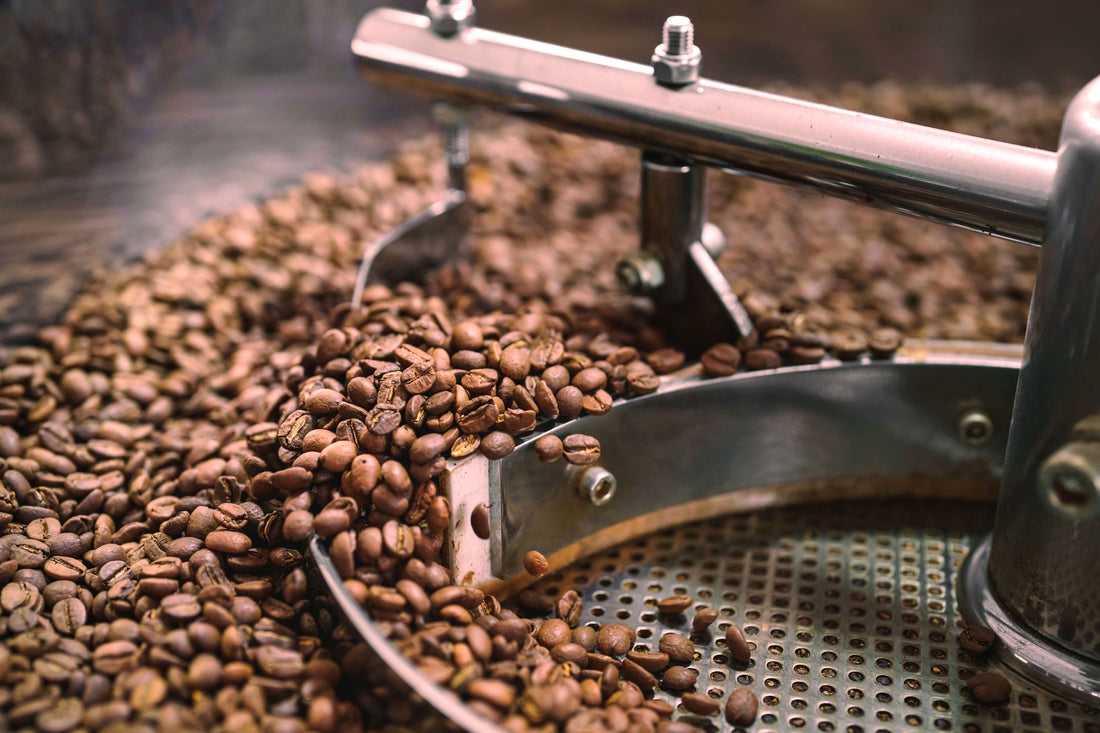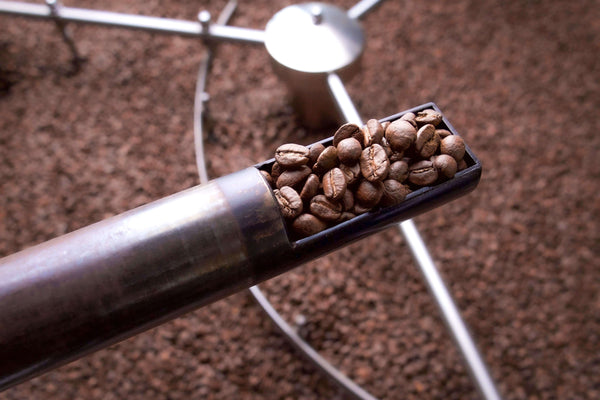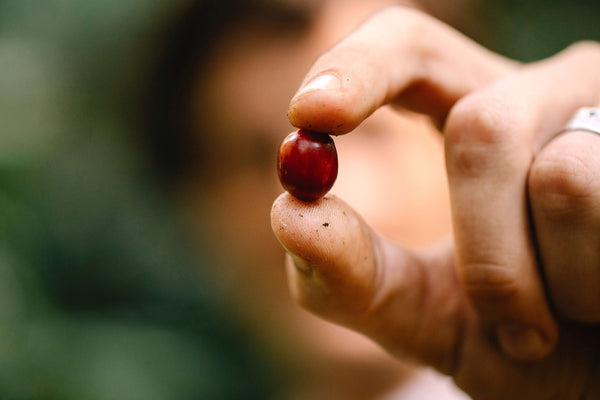
Coffee Roasting: The Maillard Reaction
tai attitude6 min read
Coffee roasting is the process of transforming the properties of green coffee beans into aromatic and flavourful roasted coffee beans; subsequently, we brew them to make the coffee (beverage) we know and love.
Diving into coffee roasting can be daunting, as it is a highly intricate process due to numerous chemical reactions taking place at different rates and interacting with each other.
One could start by exploring the Maillard reaction in coffee roasting, a chemical reaction that plays a significant role in forming most of the aromas and flavours in coffee.
What is the Maillard reaction?
The Maillard reaction is a complex chain of chemical reactions that occurs when heat is exposed to amino acids and reducing sugars.
A wide variety of foods we are familiar with for their distinctive browning, aroma, and flavour have undergone the Maillard reaction, including chocolate, cookies, toasted bread, grilled meats, French fries, and, of course, coffee, to name a few.
 Food that has amino acids (proteins) and reducing sugars (carbohydrates), when heated, is capable of triggering the Maillard reaction.
Food that has amino acids (proteins) and reducing sugars (carbohydrates), when heated, is capable of triggering the Maillard reaction.
In essence, the Maillard reaction is a chemical reaction responsible for browning (non-enzymatic) and flavour development. It produces changes in the sensory attributes of colour, aroma, and overall flavour of that food.
The Maillard reaction is named after the French chemist Louis-Camille Maillard, who first described the process in the early 20th century.
The Maillard reaction in coffee roasting
For coffee, the Maillard reaction takes place during coffee roasting, which is responsible for the transformation of most of the aromas and flavours of coffee beans.
During coffee roasting, as the green coffee beans are heated to 140 to 165 °C (280 to 330 °F), the Maillard reaction activates, with the initial colour change of green turning yellow.
The amino acids act as catalysts for reducing the sugars present in the green coffee beans by undergoing a complex chain of chemical reactions, forming hundreds of different intermediate compounds during the process.
These intermediate compounds interact with each other, continuously forming and breaking; the process continues with heat until either the roast is ended or the Maillard reaction depletes all of its reactant compounds.
End products of the Maillard reaction
The formation of possible aromas- and flavour-responsible compounds (referred to as end products) in the final roasted coffee beans can be vastly different; it ultimately comes down to two key factors:
i) the precursor compound composition of the green coffee beans
ii) how the Maillard reaction is modulated and the roast level
The exact amount of end product possible in coffee roasting still remains unknown; more research is needed in this space.
To help ease understanding, we have grouped two tables below for what we know so far, categorised as non-volatile and volatile; these are qualitative descriptions intended as general guidelines.
Non-volatile compounds
 Please zoom in to read or download this table.
Please zoom in to read or download this table.
Chlorogenic acids
Chlorogenic acids (CGAs) are non-volatile compounds (they have no aromas), but they all contribute to bitterness and astringency.
During coffee roasting, high heat breaks down the highly abundant CGAs present in green coffee beans. In turn, some of these CGAs convert into volatile aroma and flavour compounds or, alternatively, react with other compounds to form new compounds in the continuation of the coffee roasting process.
The total CGA content gradually reduces as coffee roasting goes further.
Melanoidins
Melanoidins are formed as one of the end products of the Maillard reaction. It has brown pigmentation, is non-volatile (no aroma), and is a high-molecular-weight compound.
Melanoidins, in particular, greatly contribute to the colour, roast flavour (bitterness), and texture (mouthfeel/body) of the coffee.
As the Maillard reaction progresses, the amount of melanoidins produced increases; this shifts in the coffee bean's browning, increasing in roast flavour (bitterness), complexity, and viscosity.
Volatile compounds
 Please zoom in to read or download this table.
Please zoom in to read or download this table.
Volatile compounds are defined as low-molecular-weight compounds that are lighter than air at room temperature. These compounds evaporate at room temperature, and as a result, some are bound to have a perceivable odour, scent, or aroma.
During coffee roasting, the Maillard reaction forms hundreds of volatile compounds as end products. These compound groups consist of furans, pyrazines, thiols, pyridines, etc.; each has its own properties.
The aromas and flavours we perceive from a cup of coffee are primarily derived from these volatile compounds in the coffee. In other words, volatile compounds are what make coffee so aromatic and flavourful.
Depending on both the composition and abundance of volatile compounds, these collectively give a coffee its unique aromas and flavours, thereby making the experience distinctive.
Proteins positively correlate with sensory quality
As we know so far, amino acids (proteins) are precursors; they participate in the Maillard reaction for the formation of aromas and flavours.
A fairly recent 2023 study has demonstrated two important findings:
i. The higher the protein concentration in green coffee beans, the higher the coffee's (beverage) sensory quality.
ii. The more proteins are degraded during coffee roasting, the higher the coffee's (beverage) sensory quality.

Proteins are an essential determinant of coffee's sensory quality. Image and study credit: ScienceDirect.
The key takeaway:
Since amino acids (proteins) are fundamental to the Maillard reaction,
Roasting green coffee beans that have a higher protein concentration allows a higher rate of protein degradation by the Maillard reaction, thus leading to a higher potential for aroma and flavour formation. The opposite holds true.
While sugar content is unquestionably important for coffee's sensory quality, protein is an often-overlooked piece in the grand scheme. Perhaps we will see a trend where coffee producers and industry professionals give equal attention to protein content in the coming time.
The Maillard reaction and roast levels
Green coffee beans can be roasted to different roast levels (a.k.a. roast spectrums), ranging from light to medium to dark roasts. This is a decision by the coffee roaster, often based on output quality and business.
On the other hand, consumers have the option to go for the roast level they enjoy. When choosing roasted coffee beans on the shelf, roast levels aside, often the packaging is also labelled with alluring flavour notes (or a flavour description). Some consumers are like, What do these even mean?
Besides, for coffee that comes from the same producing region, why do light, medium, or dark roasts taste so inherently different, and how did these flavour notes come to be?
The answer to both questions lies in the fact that different aroma- and flavour-responsible compounds (end products) are formed at different stages of the Maillard reaction in coffee roasting.
Therefore, different roast levels do have different end products. To put it generally:
Light roasts, such as Cinnamon Roast or New England Roast, undergo a lesser extent of the Maillard reaction, resulting in brighter-toned, high-vibrant end products of fruitiness, florality, and the herbyness of compounds.
Medium roasts, like American Roast or City Roast, undergo a moderate level of Maillard reaction, exhibiting dominating end products of caramel, chocolate, and nutty while also having minimal residue of fruitiness-related compounds.
Dark roasts, such as Full City, Vienna, French, or Italian Roasts, undergo an extensive Maillard reaction and beyond, leading to a bolder smokiness of end products with mostly carbony, resinous, spicy, and savoury compounds and subtle residues of caramel, chocolate, or nutty compounds.
For the changes coffee beans go through in coffee roasting, read this publication.



